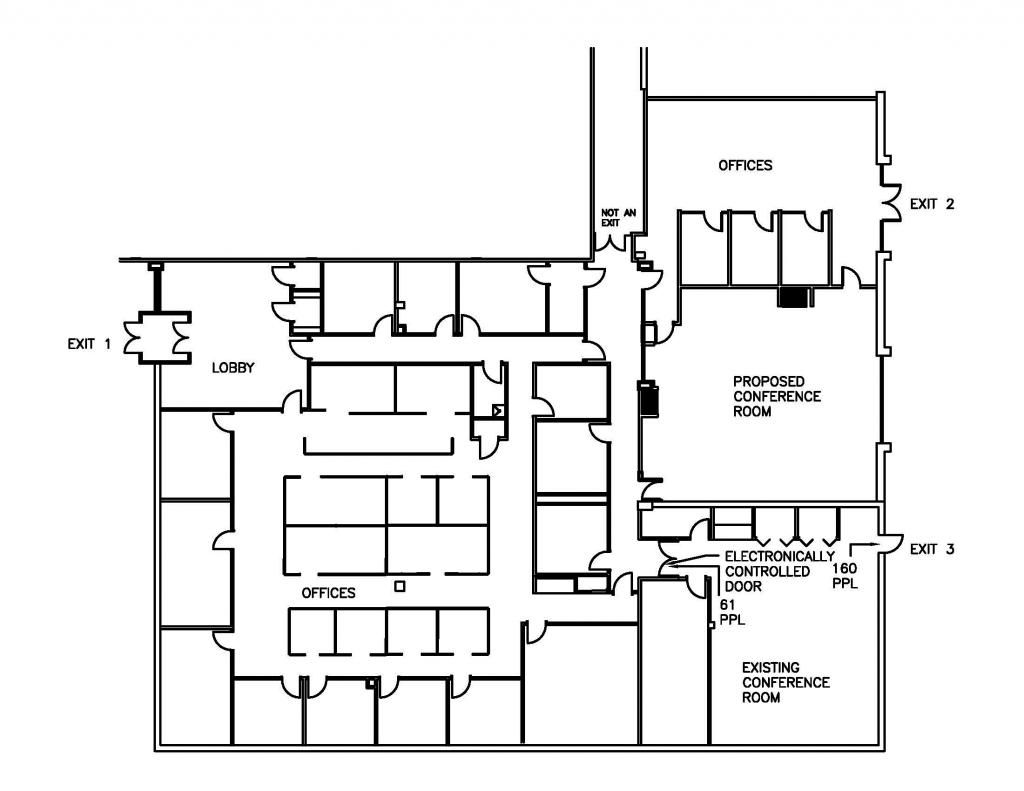Mech
Registered User
2009 IBC
Existing Building with a proposed addition.
There are 3 exit doors, one of which is located in an existing conference room. This conference room (total occupant load = 221 people) utilizes a code reader to limit access from the office area. The conference room exit door capacity is 160 people. The remaining 61 people need to egress back through the office area. (The doors are not locked to occupants inside the room.)
1005.1 Minimum required egress width.
The means of egress width shall not be less than required by this section. The total width of means of egress in inches (mm) shall not be less than the total occupant load served by the means of egress multiplied by 0.3 inch (7.62 mm) per occupant for stairways and by 0.2 inch (5.08 mm) per occupant for other egress components. The width shall not be less than specified elsewhere in this code. Multiple means of egress shall be sized such that the loss of any one means of egress shall not reduce the available capacity to less than 50 percent of the required capacity. The maximum capacity required from any story of a building shall be maintained to the termination of the means of egress.
Exception: Means of egress complying with Section 1028.
When sizing multiple means of egress to ensure 50% capacity in case one of the three exit doors is blocked, can I utilize this conference room door as being available? I am thinking I can because the door is at full capacity using occupants in this room alone.
What say you?
Existing Building with a proposed addition.
There are 3 exit doors, one of which is located in an existing conference room. This conference room (total occupant load = 221 people) utilizes a code reader to limit access from the office area. The conference room exit door capacity is 160 people. The remaining 61 people need to egress back through the office area. (The doors are not locked to occupants inside the room.)
1005.1 Minimum required egress width.
The means of egress width shall not be less than required by this section. The total width of means of egress in inches (mm) shall not be less than the total occupant load served by the means of egress multiplied by 0.3 inch (7.62 mm) per occupant for stairways and by 0.2 inch (5.08 mm) per occupant for other egress components. The width shall not be less than specified elsewhere in this code. Multiple means of egress shall be sized such that the loss of any one means of egress shall not reduce the available capacity to less than 50 percent of the required capacity. The maximum capacity required from any story of a building shall be maintained to the termination of the means of egress.
Exception: Means of egress complying with Section 1028.
When sizing multiple means of egress to ensure 50% capacity in case one of the three exit doors is blocked, can I utilize this conference room door as being available? I am thinking I can because the door is at full capacity using occupants in this room alone.
What say you?

